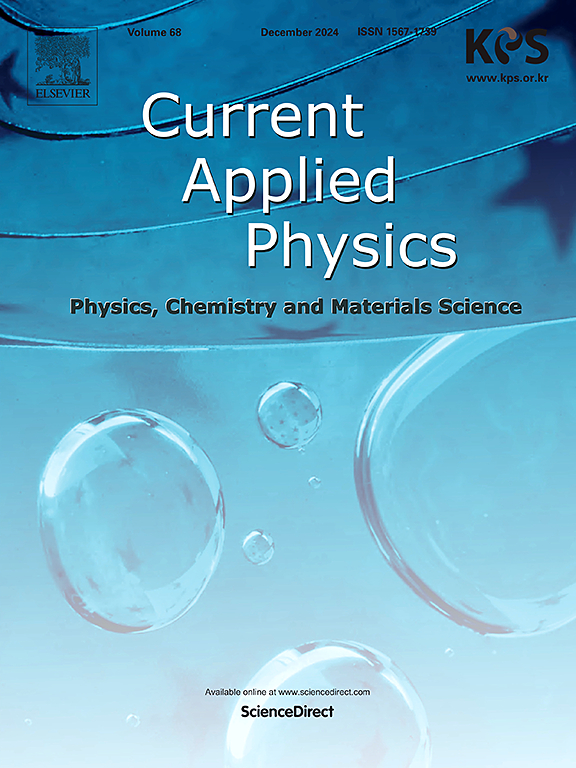Photoluminescent characteristics of novel CaGdAl3O7: Sm3+ nanophosphors for WLEDs
IF 3.1
4区 物理与天体物理
Q3 MATERIALS SCIENCE, MULTIDISCIPLINARY
引用次数: 0
Abstract
This report presents an inclusive examination into synthesis, structural and optical properties of Sm3+ activated CaGdAl3O7 nanophosphors, aimed to develop tuneable luminous materials for applications i.e. white-light-emitting diode (WLED). Sm3+ activated CaGdAl3O7 nanophosphors have been synthesised via combustion method. Phase purity of synthesised nanophosphors was affirmed via PXRD (Powder X-ray diffraction analysis). TEM (Transmission Electron Microscopy) and SEM (Scanning Electron Microscopy) study was accomplished to analyse size and surface morphology. EDAX (Energy dispersive X-ray) analysis approves the existence of different element. The PL (Photoluminescence) emission spectra of all samples were recorded upon excitation at 402 nm suggesting orange red emission around 598 nm pertaining to transition 4G5/2 → 6H7/2 of Sm3+ ions. The optimal Sm3+ concentration was recognized at 7 mol%. Optical bandgap of 3.99 eV was evaluated for CaGd0.93Sm0.07Al3O7 sample. CIE coordinates were (0.634, 0.365) and CCT value (2096 K) of CaGd0.93Sm0.07Al3O7 demonstrates emission of light in warmer region.

wled用新型CaGdAl3O7: Sm3+纳米荧光粉的光致发光特性
本报告对Sm3+活化的CaGdAl3O7纳米荧光粉的合成、结构和光学性质进行了全面的研究,旨在开发可调谐发光材料,如白光发光二极管(WLED)。采用燃烧法制备了Sm3+活化的CaGdAl3O7纳米荧光粉。通过PXRD(粉末x射线衍射分析)确定了合成的纳米荧光粉的相纯度。通过透射电子显微镜(TEM)和扫描电子显微镜(SEM)分析了尺寸和表面形貌。EDAX(能量色散x射线)分析证实了不同元素的存在。在402 nm激发下记录了所有样品的PL(光致发光)发射光谱,表明Sm3+离子的4G5/2→6H7/2跃迁在598 nm左右发射橙红色。Sm3+的最佳浓度为7mol %。CaGd0.93Sm0.07Al3O7样品的光带隙为3.99 eV。CIE坐标为(0.634,0.365),cagd0.93的CCT值为(2096 K)。
本文章由计算机程序翻译,如有差异,请以英文原文为准。
求助全文
约1分钟内获得全文
求助全文
来源期刊

Current Applied Physics
物理-材料科学:综合
CiteScore
4.80
自引率
0.00%
发文量
213
审稿时长
33 days
期刊介绍:
Current Applied Physics (Curr. Appl. Phys.) is a monthly published international journal covering all the fields of applied science investigating the physics of the advanced materials for future applications.
Other areas covered: Experimental and theoretical aspects of advanced materials and devices dealing with synthesis or structural chemistry, physical and electronic properties, photonics, engineering applications, and uniquely pertinent measurement or analytical techniques.
Current Applied Physics, published since 2001, covers physics, chemistry and materials science, including bio-materials, with their engineering aspects. It is a truly interdisciplinary journal opening a forum for scientists of all related fields, a unique point of the journal discriminating it from other worldwide and/or Pacific Rim applied physics journals.
Regular research papers, letters and review articles with contents meeting the scope of the journal will be considered for publication after peer review.
The Journal is owned by the Korean Physical Society.
 求助内容:
求助内容: 应助结果提醒方式:
应助结果提醒方式:


